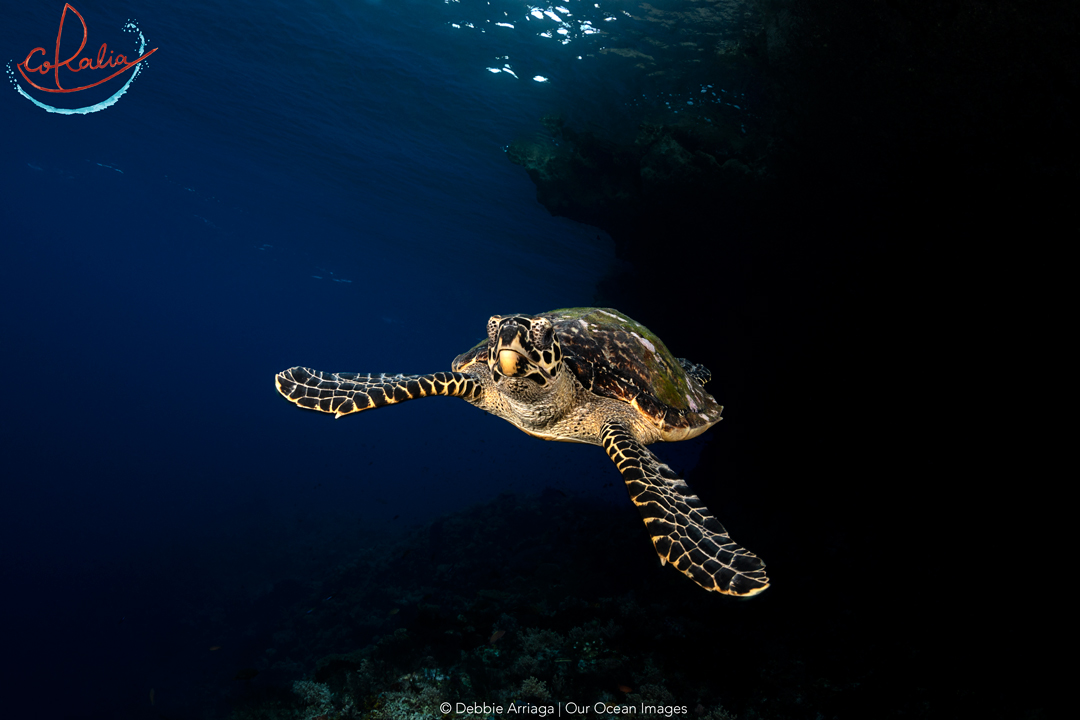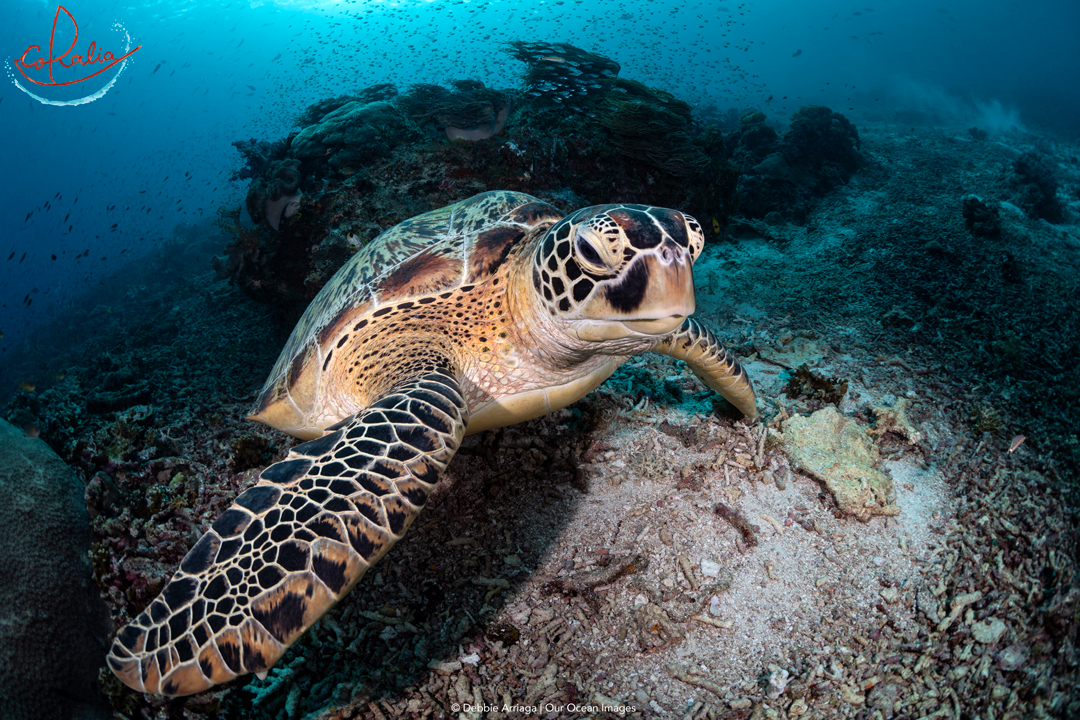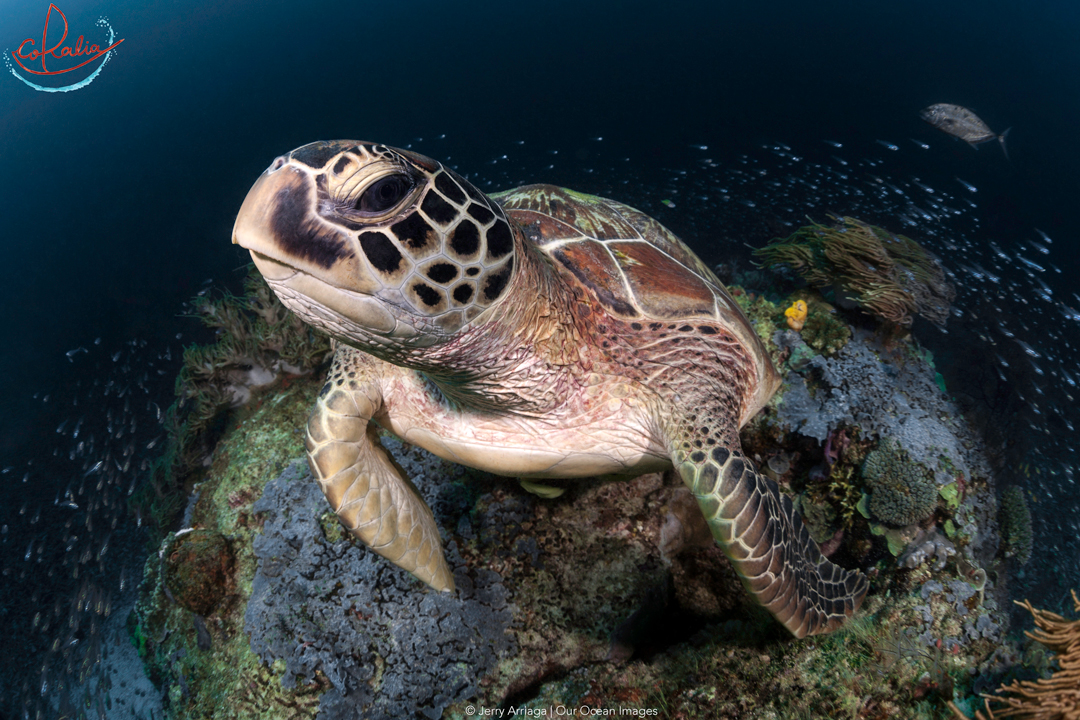Turtles in Indonesia
Indonesia is a great place to see turtles! Sea turtles are really ancient. The oldest known sea turtle fossil is 120 million years old! This makes sea turtles some of the oldest creatures on the planet!
There are seven species of sea turtles in the world. Six of those species live in Indonesia:
- Green turtle (Chelonia mydas)
- Hawksbill turtle (Eretmochelys imbricate)
- Olive ridley (Lepidochelys olivacea)
- Leatherback sea turtle (Dermochelys coriacea)
- Flatback sea turtle (Natator depressus)
- Loggerhead sea turtle (Caretta caretta)
For those who are curious, the seventh species is Kemp’s ridley (Lepidochelys kempii), found primarily in the Gulf of Mexico.
The two most encountered sea turtles while scuba diving or snorkelling in Indonesia are the Hawksbill turtle and Green turtle.

Hawksbill Turtles
You can identify a hawksbill turtle by its narrow, pointed beak. Also, by the distinctive pattern on their shells. Their scales on their shells overlap and form a serrated look on the edges.
Hawksbills feed mainly on sponges. They use their narrow, pointed beaks to get them out of crevices in the reef. That’s why when you come across a feeding hawksbill turtle you will quite often see them digging in small cracks and holes to get at the tasty bits of sponge! Hawskbill turtles will also eat jellyfish and sea anemones.
This type of turtle is found mainly throughout the world’s tropical ocean. You will predominately find them on coral reefs. They are an important part of our marine ecosystems. They help maintain the health of corals reefs and sea grass beds.
Hawksbill turtles can quite often be very curious of us scuba divers. They have been known to swim right up to divers to check them out. This turtle in Raja Ampat, Indonesia was very curious, watch the video here.

Green Turtles
Green turtles can grow to over one metre long. They are one of the largest sea turtles. Generally, they have very pretty shells that sometimes have a green tint to them. However, green turtles are in fact named for the greenish colour of their cartilage and fat.
These sea turtles are found mainly in tropical and subtropical waters. They are the only herbivore sea turtle. Green turtles especially like to eat seagrass and algae. This feeding also plays an important part in maintaining seagrass beds, making them more productive.
Seagrass beds are a very important habitat. They function as nurseries for several species of fish and invertebrates. When green turtles eat seagrass, they quickly digest it. This then becomes nutrients for the residents of the seagrass beds.
We often find Green turtles lazing on the reef at cleaning stations. If you are calm and slow, you can approach them for a closer look without disturbing them. The huge female green turtle in both the photos in this blog is a resident at one of our favourite dive sites in the Dampier Strait.
Join Coralia Liveaboard to see some turtles in Indonesia! Have look at our cruise schedule here.
Learn More about Marine Life in Indonesia
Have a look at our other interesting articles about marine life in Indonesia in Coralia’s news section:

